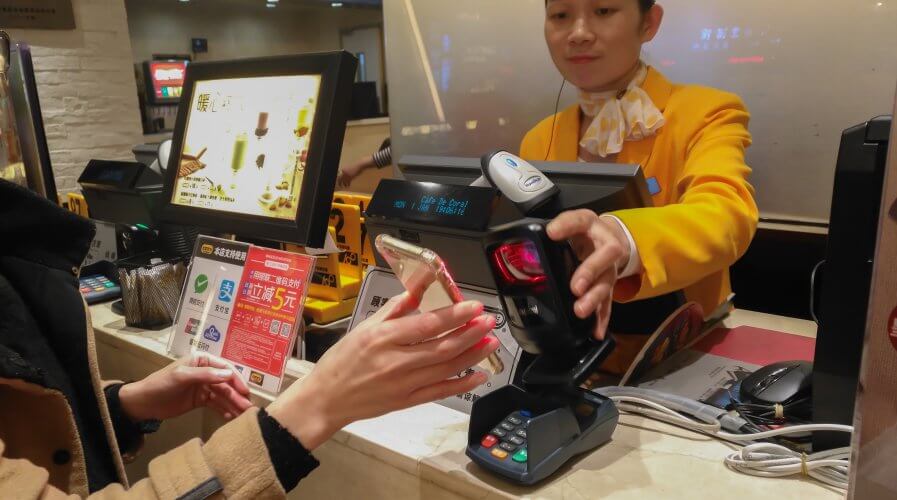
Could this become the only way to pay in the not-too-distant future? Source: Shutterstock
Are mobile payments the future? COVID-19 could see it go either way
While the COVID-19 pandemic may have shuttered businesses, it has been a boon for most digital services, such as remote work apps, e-learning tools, and e-commerce solutions. One digital technology, however, isn’t faring too well – mobile payments.
Since the beginning of the year, Chinese mobile payment vendors have seen their numbers plunge.
Strict lockdowns and physical distancing measures have been keeping people indoors and cutting down on discretionary spending, leaving most bricks-and-mortar stores empty.
This makes mobile payment vendors unfortunate victims, as offline transactions make up the bulk of their business.
But Chinese payment giants remain steadfastly optimistic about the market outlook.
Alibaba’s Chief Executive Officer, Daniel Zhang, framed the epidemic and all its eventualities as a Black Swan event, and has sent a resolute message that the firm’s AliPay will indeed be hurt, but it will be a one-off event.
Tencent’s WeChat Pay also vowed to recover fast.
James Mitchell, Tencent’s chief strategy officer, said that while business dipped during the Lunar New Year Holiday, they are already rebounding with “supply coming back, although there is still some suppression in demand.”
China has been working hard to establish itself as a cashless society. The move to mobile payments was relatively smooth: convenience was the goal, digital maturity enabled it, and the technology was readily available.
Regardless of age group, the Chinese have widely embraced going digital – there are 800 million mobile phone users, with 86 percent of the population using e-wallets to pay for everything from clothes to food and taxi rides.
Going cashless has its benefits. For one, it’s convenient for both the merchant and the customer. Handling physical cash is cumbersome, easy to lose, and difficult to keep track off.
Businesses could also integrate incentive programs into mobile payment applications, enabling them to retain customer loyalty. There is also the obvious benefit of speeding up the transaction process. An additional plus, particularly in the current climate, is reducing contact as money changes hands.
But is mobile payment the future, and should we all look to follow in China’s footsteps?
While mobile payments are convenient, there are some negative effects. Loads of sensitive information is collected and stored each time we pay by phone, and that means we are placing trust in the robustness of providers’ security measures.
If retailers implement cashless policies, they are at risk of sidelining members of society that don’t or can’t use mobile payment tech. Or, for example, even lucrative tourists. In some parts of China, no amount of greenbacks can get a tourist a bottle of water – merchants only accept mobile payments, and without a Chinese bank account, foreigners cannot do so.
While providers may be seeing a dip in mobile payments now, many retailers that remain open are pushing customers to use contactless payment methods, due to them lowering the risk of transmission.
With retailers, and many customers, enjoying the added convenience, these sort of policies may stick around long after the current crisis resides. In this regard, the COVID-19 pandemic may actually kickstart a further movement towards mobile payment technology in the long run.


